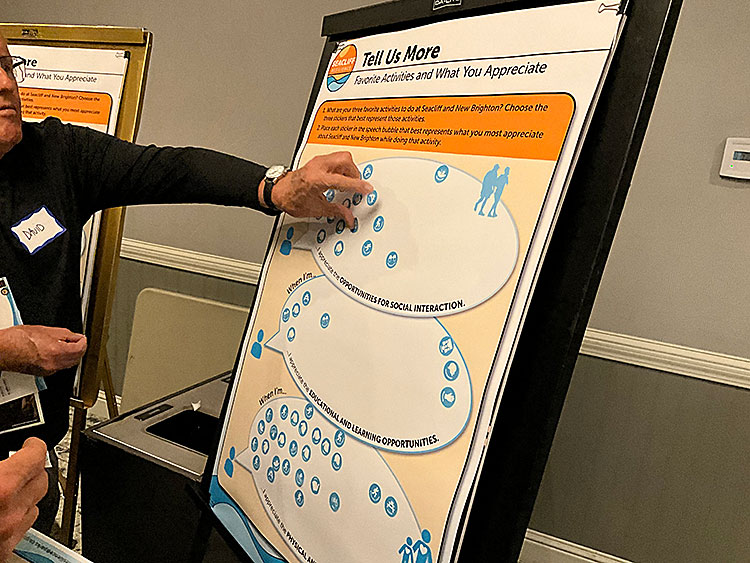By Jondi Gumz
On Sept. 26, when State Parks staff hosted an open house to update the public on the future of Seacliff State Beach, where an epic storm in 2023 left perhaps $100 million in damages, an estimated 300 people showed up.

An overflow crowd attends the State Parks meeting on Seacliff State Beach • Photo Credit: Jondi Gumz
Many could not get into the meeting room at Seacliff Inn booked for the open house, and they crowded at the doors, straining to hear.
Every chair was taken, and it was standing room only along every wall.
Not to worry — If you didn’t get in, you can join a webinar Oct. 21 (start time 6-7:30 p.m.) with the same presentation. You must RSVP at www.seacliffresilience.org.
The good news is you can still give your input on Seacliff Beach recovery and resilience because State Parks is only at step 2 of a 5-step process. There is no timeline.
Step 1 was a vulnerability assessment. Santa Cruz State Parks Superintendent Chris Spohrer alerted the crowd that the park facilities — being on the ocean — are “very vulnerable to future storms.”
He did not give dollar figures but reports suggest damages to the campground and seawall alone may exceed $30 million.
In years gone by, picnic tables at parks were made of pressure-treated wood infused with creosote — a probable human carcinogen made from coal tar — to protect against decay, insects and the harsh outdoors.
When the storm dumped epic rain and the ocean generated mighty swells, this left huge logs on the beach and destroyed electrical systems and restrooms and water systems for camping. This resulted in a giant mess to clean up — with the pressure-treated wood hauled away to a special landfill willing to accept it.
 Do not expect creosote to be used in the future.
Do not expect creosote to be used in the future.
Step 2 is identifying beneficial adaptations. One station showed landscape examples such as a seawall, a vegetated dune, rock revetment and erosion controls.
Step 3 is a plan that envisions the future of the state beach.
Step 4 is permitting. Expect the California Coastal Commission to weigh in.
Step 5 is executing the plan once approved.
Money will be a challenge as FEMA suspended reimbursement for past disaster storm damages after running out of funding and is focused on current disaster damages.
Congress could allocate more money, but did not so in the temporary budget fix to keep the federal government operating through Dec. 20. The topic may arise as the “continuing resolution” deadline nears.
Those who attended had the opportunity to ask questions of State Parks staff at five different stations, the overview, the vulnerability, the survey — answered by 3,855 respondent answering what they enjoy about Seacliff State Beach and what kind of benefits they get from their visit.
Attendees also could vote using sticky dots on what activities bring them to the beach and what landscape elements they liked.
State Parks also asked how do you envision Seacliff State Beach in 2045.
Some answers: “Easy access to the sand,” “Walking along the beach and listening to the waves.”
One woman was puzzled: “2045 — we’ll all be dead by then.”
TOP PHOTO: Voting on benefits of Seacliff State Beach. • Photo Credit: Jondi Gumz



